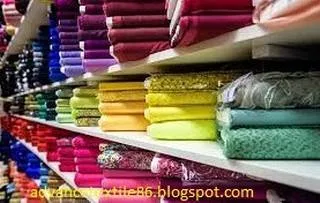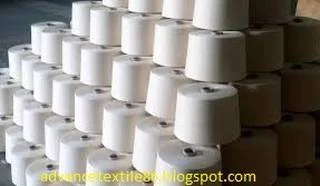Textile manufacturing process
Textile
manufacturing processes in the global textile industry are producing yarn,
fiber, fabric, and finished products, including clothing. The global textile
industry associated with apparel and non-clothing products is expected to
surpass USD 1000 billion in the next few years. The textile industry market is
mainly represented by China, the United States, India, and the European Union.
China has been identified as one of the top textile manufacturing facilities in
the world, representing about one-fourth of the global textile industry. One of
the growing concerns in textiles is the release of environmental hazards from
the fiber and fabric processing industry. Most of the processes in the textile
production system release significantly toxic and hazardous wastes for river
water, soil, and air. Especially fiber and yarn production, chemical finishing,
pre-treatment process, dyeing, printing, coating, and drying works without
toxic gases, carcinogenic substances, harmful vapors and links, and carrier
discharges. As a result, standards and regulations are developed to limit or
eliminate environmental degradation.
Different steps of the textile manufacturing process
Different
steps of the textile manufacturing process, such as below-
Yarn manufacturing process
Yarn
manufacturing consists of multiple processes involved in converting fibers into
yarn. It was the origin of natural fiber derived from natural plant or animal
sources. Natural fibers are produced from natural elements with natural
impurities that are removed from the yarn in subsequent processes. Probably,
cotton is the fiber that underpinned yarn production from the opening of the
fiber bell, followed by a continuous process of blending, mixing, cleaning,
carding, drawing, roving, and spinning. Production of yarn using cotton fiber
in a sequence of processing stages. All of these operations are mechanical and
do not require any chemical application. Yarn manufacturing uses a machine of
special nature at each processing stage and provides quality effects in yarn
production. The advancement of fiber processing and machine technology for
making yarn is uninterrupted. Manual picking of cotton fiber has now been
replaced with machine picking. However, conventional systems of mixing,
carding, drawing, rowing, and spinning are important indicators of the future.
Yarn diameter, hairiness, linear density, permeability, strength characteristics,
etc. depend on the end-use requirements of the fabric for production for
garments or industrial fabrics, knitted or woven end products such as sewing
thread or cordage.
Fabric manufacturing process
The textile fabric is at least a two-dimensional structure produced by fiber/yarn
interlacing. Mainly used interwoven fibrous structures knitting, woven, and
nonwoven. Generally, weaving technology has been the main source of fabric
production. Important types of woven fabrics to be encouraged are basic weaves
like plain or tabby, towels and satin, and fancy weaves with piles, jacquards,
dobbies, and gauze. Knitted fabric is the second main type of fabric used after
weaving. It has the feature of adjusting the contour of the body and
facilitates movement. It is a particularly comfortable form of fabric structure
for sports, casual wear, and underwear. Knitted fabrics include weft types and
twist types, Russell and Tricot. Net, lace, and bread are other useful
interconnected fabric structures. Nonwoven fabrics are growing rapidly in the
market. These fabrics are looking for interesting uses in industrial and indoor
applications. Non-woven fabrics include materials produced by felting and
bonding. Laminating processes are also gaining importance and fairly recent
events include needle weaving and sewing-knitting processes.
Garment manufacturing process
The garment is called a piece of clothing. Garment design and manufacturing is a
combination of industry and technology. It saws several advances in design
development, computer-aided manufacturing (CAD), and automation. However, the
older version of the garment manufacturing process is still the main theme
today so that is the cutting and joining of at least two fabrics. Sewing
machines have the function of joining woven or cut knitted fabrics. Garments
are mostly produced by sewing pieces of cloth using sewing machines. Currently
important aspects of the current garment manufacturing industry range from
product development, production planning, and material selection. Selection of
garment designs including computer-aided design, spreading, cutting, and
sewing. Joining techniques and manufacturing seamless garments are beneficial
to meet the needs of the customer.
Pretreatment process
Different
types of pretreatment processes are performed in the textile industry for removing
natural impurities from textile-like de-sizing, scouring, bleaching,
mercerization, washing, and heat setting. One or more of these processes are
needed for a textile substrate, depending on the end-use of the textile.
Generally, the pretreatment process is performed on a combination of cotton,
cellulose fiber, wool, and synthetics, and these fibers with semisynthetic.
Natural fibers, including cotton and wool, contain natural impurities and the
purpose of pretreatment is primarily to remove unwanted natural fibrous
material.
Dyeing process
Dyeing
is a color effect across the cross-section of the fiber and this effect can be
created on any size textile substrate including fiber/yarn, fabric, clothing,
and textile articles. However, it is suitable for certain types of fibers for
dyeing any dyestuff. The textile substrate is dyed using dyestuffs including
reactive, direct, sulfur, vat, pigment, acid, and dispersal, depending on the
compatibility of the dye-fiber system. The dyeing method used may be
continuous, semicontinuous, or batching. The industry performs uninterrupted
dyeing techniques for large-scale production. In order to provide resistance
and durability against washing, heat, chemicals, soap, abrasion, sunlight,
etc., the stabilization of dyestuff in the fabric or garment should be
significantly faster. Washing of the dyed fabric and the discharge of dye
effluent may release 10–50% of dyestuff to the environment which has
environmental concerns regarding the dyeing process.
Finishing process
Textiles
require special finishing effects. The functional properties of textile fibers
are limited. Different performance effects are required for the end-use of
textile products like Crease recovery, Flame retardant, Water repellent,
Antibacterial, Antistatic, Mothproofing, Softening, and Hand-Builder are
special finishing effects that can be created in textiles. Traditionally,
special finishing is performed after the dyeing of textiles; However, the
innovation showed the possibility of performing special finishes after coloring
and especially finishing with the coloring process. Alternate finishing and
color processing sequences can provide enhanced finish effects or color effects
on the subject of the search.
Environmental impact
All environmental fields such as air, water, and soil are severely damaged by the textile manufacturing process from fiber production to the final fabric finishing. Adverse effects from chemicals used in textile fiber production and processing, textile dyeing, printing and finishing, dust, short fiber, and yarn production, release of lint, volatile and toxic gases, etc. the environment and human life. An estimate of the unwanted effects on the environment associated with the major processing units of the textile industry can be presented based on the number of chemicals, water, and fuel used. The more chemicals, water, and energy are consumed in a textile process, the more likely it is to have an undesirable effect on the breathing and reproduction of our planet and living species. Living species are directly or indirectly affected by the inhalation of toxic gases, ingestion of contaminated water and food, and skin contact with toxic fumes and gases.












0 Comments